Iceland is so rich in soul busting landscape, that even on a short visit here, you will get a great flavour of this special place. If, however, you are here for a little longer, then a trip two hours north west will introduce you to a little slice of Icelandic heaven. Check out our experiential guide on what to see when visiting Snæfellsnes Peninsula and we just know you will be hooked.
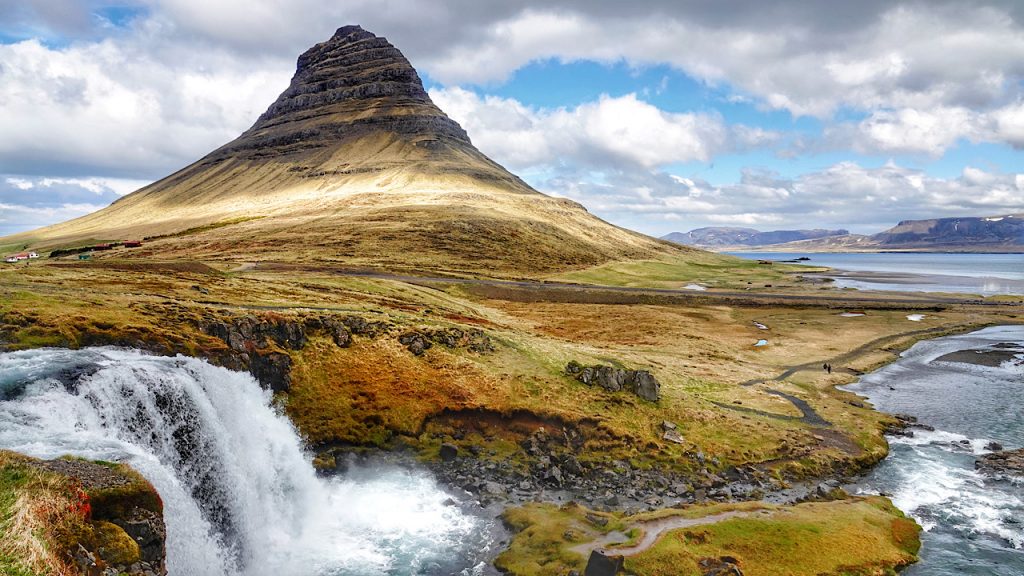
With just a 2 hour drive from Iceland’s capital Reykjavik, and you are in the heartland of some of Iceland’s most raw, inspiring and earthly landscape imaginable. Renowned for its `Little Iceland’ or Iceland in miniature reputation, a tour of this stunning peninsula is well worth the excursion. So many people, (me included) head for the Golden Circle or the South Coast tours and generally tend to miss this remote, yet paradoxically accessible region of Iceland. Now don’t get me wrong, there’s nothing wrong with the two tours I’ve mentioned. I thoroughly enjoyed the them both and they created some memorable moments. Our Four Days Iceland Introduction was a perfect glimpse into this wondrous world, so much so that it influenced me to return. Although as part of our beautifully designed 25 day independent tour by Discover the World we have been privileged to witness this stunning National Park for ourselves. And it is with that in mind, that I felt drawn to sharing our experiences to help influence your future Iceland travel plans.
Iceland offers us a peek into life at its most primeval yet mysterious state. So much of what makes up this precious planet, happens beneath the surface. Yet Iceland allows us to glimpse at that subterranean activity with our very own eyes; the most prominent and dramatic destination on the planet, where the earth’s core reaches up to the surface and reveals its personality. Bursting geysers, bubbling hot springs, 36 active volcanoes, 150 earthquakes a year and new land forming every century. If you want to witness the planet’s heart beat, then Iceland is the place to do it. Although Iceland is vast, so underestimate the distances at your peril. Think about the size of Hungary to get a sense of the enormity of this northerly island. So seeing its best bits might be a challenge. And this is where Snæfellsnes comes into its own. In one 2-3 day tour you can get a perfect sense of Iceland as a whole. Let me show you around.
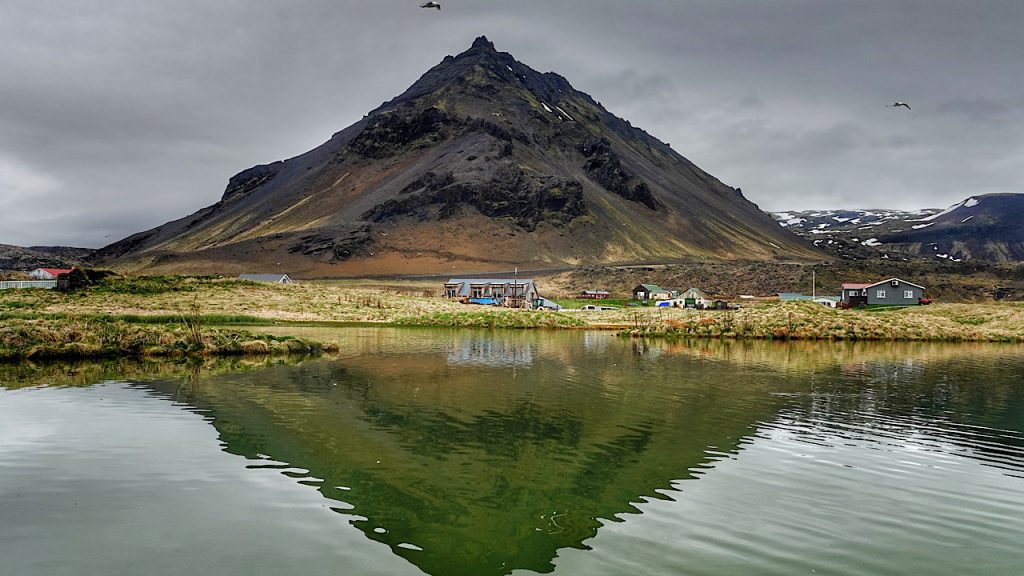
History of Snæfellsnes Peninsula
Geologically, Snæfellsnes (Snow Mountain) and its National Park dates back thousands of years and has a volcanic origin with a belt running down the peninsula’s spine. The Snæfellsjökull volcano is still deemed active, although hasn’t erupted for 1,800 years and dates back 700,000 years. Much of the surrounding landscape you see today was formed during that eruption, where the volcano burst out 1km3 of lava. The lava fields that you see on the southern edge of the peninsula are fabulous examples of how the molten rock has shaped the earth and influenced life around it. The moss that grows here, takes over 100 years to grow, so it is a precious life-form to be protected at all times.
The Snæfellsnessjökull volcano and glacier, at 1446m high, are one of the most popular in Iceland and on a clear day can be seen from Reykjavik. The glacier has long been associated with Folklore and mysticism. There is a strong magnetic energy emanating from the volcano, thought, by many to be the earth’s seventh Chakra (energy points). Many of Iceland’s Saga legends are centred here on Snæfellsnes with tales of trolls, giant men and supernatural beings centred around the glacier. Such is the infamy of the area and the glacier in particular, that Jules Verne was inspired to write and feature it in his novel, The Journey to the Centre of the Earth. A memorial to Jules Vernes can be found in the village of Arnarstapi.
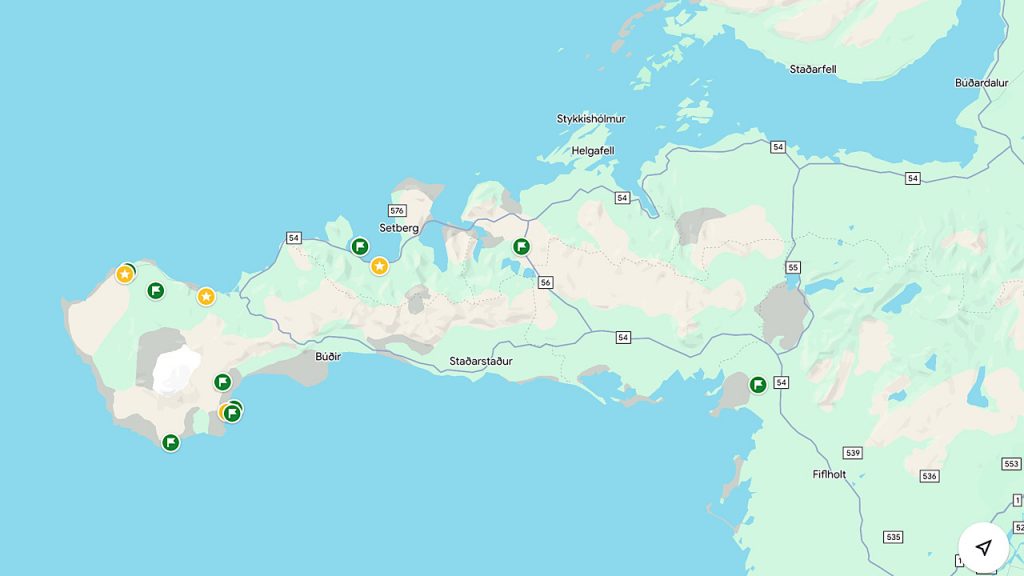
What to see when visiting Snæfellsnes Peninsula
Let’s put it out there, straight away. You are going to need a minimum of 3 days to really do this region justice. It’s not that there are huge distances to travel, although there are a ton of hikes for the adventurous, plenty of spots for the photographer and, of course, you need to make some allowances for bad weather. When a front comes in, believe us, it comes in for the duration. Albeit the Icelandic phrase of ‘There’s no such thing as bad weather, just the wrong clothing’ sounds sensible on the face of it, when Iceland gets rain, it is horizontal and the soaking type. So this might really hamper your time here. So make allowances and build that into your itinerary if you can.
So weather aside, let’s focus on the wondrous sights around this mini Iceland peninsula.
- Rauðfeldsgja Gorge
Legend has it, that Barður, a half-human and half-giant man from the 9th century killed his brother and retreated to the gorge of this waterfall. They never found his body, so the Saga is that he still lives on and is protector of the peninsula. The steep walk up to the entrance of the waterfall is beautiful. I can imagine in winter however, you will need crampons to navigate it safely. During the summer, when the snow has melted, you can cross the river and enter the mouth of the gorge, although for our visit the melting snow made it far too precarious. It is free to park and explore. Allow about 30 minutes for this view point, which has a far reaching vista across the plains to the ocean.
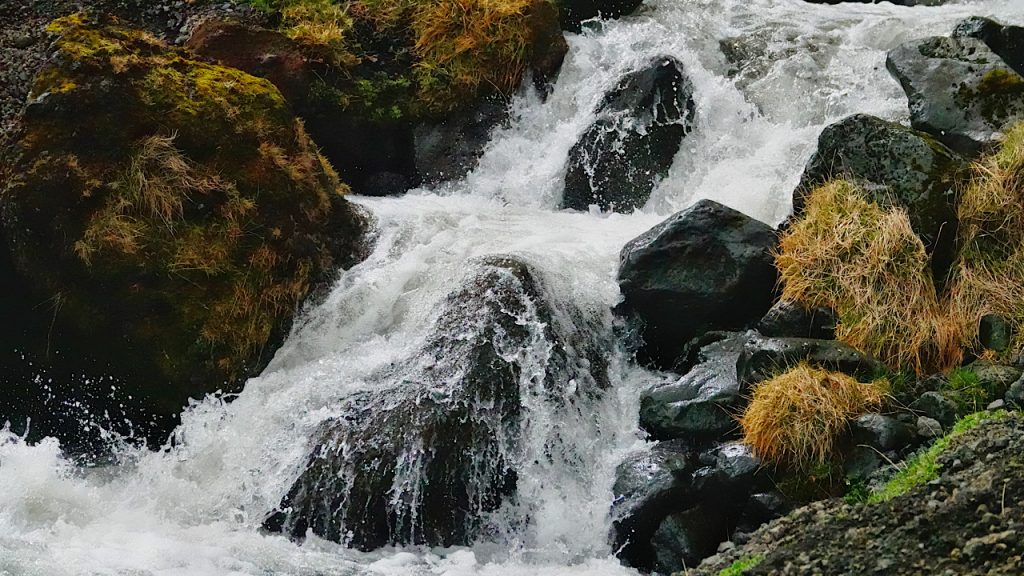
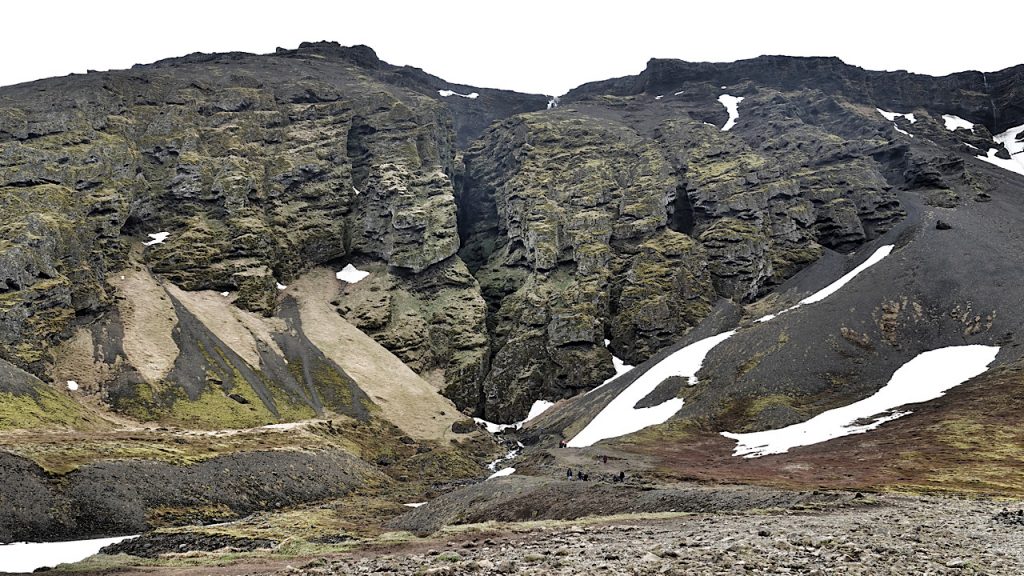
- Arnarstapi
Next on your list as you travel clockwise around the peninsula, is the small community of Arnastapi. Named with thanks to the backdrop mountain Stapi that frames the village, this is well worth a stop for an hour or so. It used to be an important trading post back in the day, although now is home to the fishermen and tourist shaped establishments. Not only do you have the magnificent coastal art gallery to explore, there’s also the wildlife, the harbour, the monument to Jules Verne and Bárður, and there’s also a café. It is a popular area, so if you can get here before 10.30am when the crowds arrive in summer, we would recommend it. You then have the entire area to yourself. Alternatively come after 3pm when most tour buses have returned back to Reykjavik. You will be amazed by the diverse viewing points here.











- Hellnar
Just a 10 minute drive to the west from Arnarstapi you will find the old community of Hellnar. Now filled mostly with holiday accommodation, on the surface it might not seem worthy of a visit. Although the short drive to the parking area by the coast reveals firstly the 19th century church has the most amazing mountain backdrop making it so picturesque. And then there is the coastal artwork, which whilst marginally less dramatic than Arnarstapi, is still worthy of a look. There is a massive sea arch that draws in the ocean as it crashes into the cliffs creating a very dramatic effect, especially in stormy seas. And to the left and towards Arnarstapi there is a fabulous hour’s walk along a partially boardwalked footpath that links the two villages. What makes this worthy of a mention, is that you walk right through and amongst the Hallmundarhraun lava field which feels quite surreal. We’ve walked through many types of topography, although the uniqueness of this landscape just brings you right back down to earth and reminds us of our true roots.
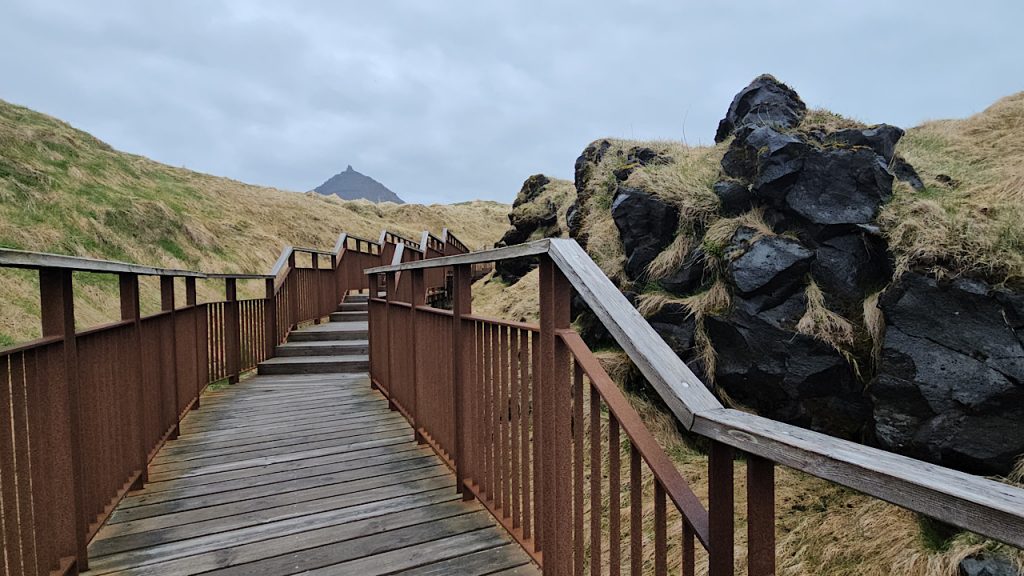
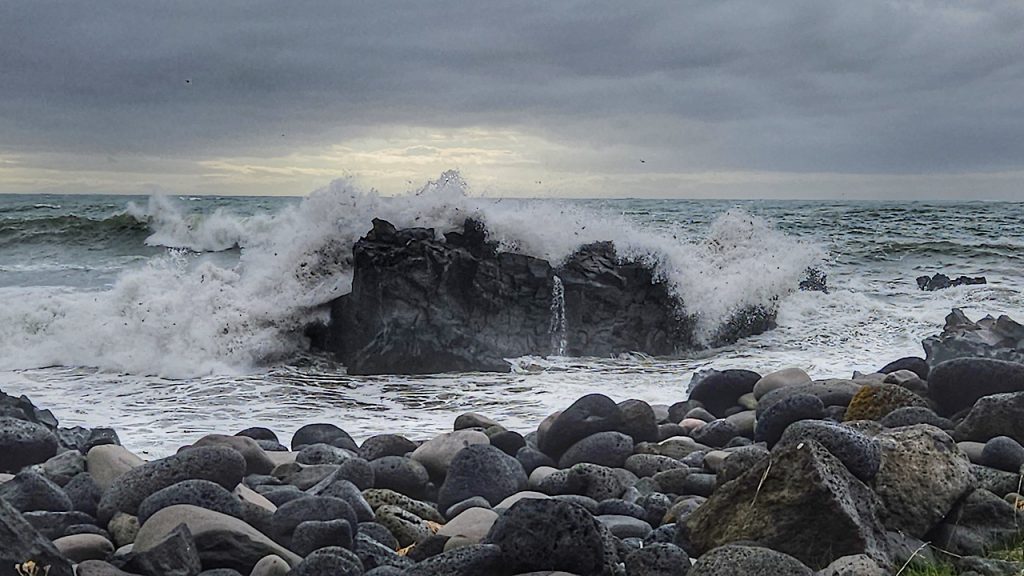
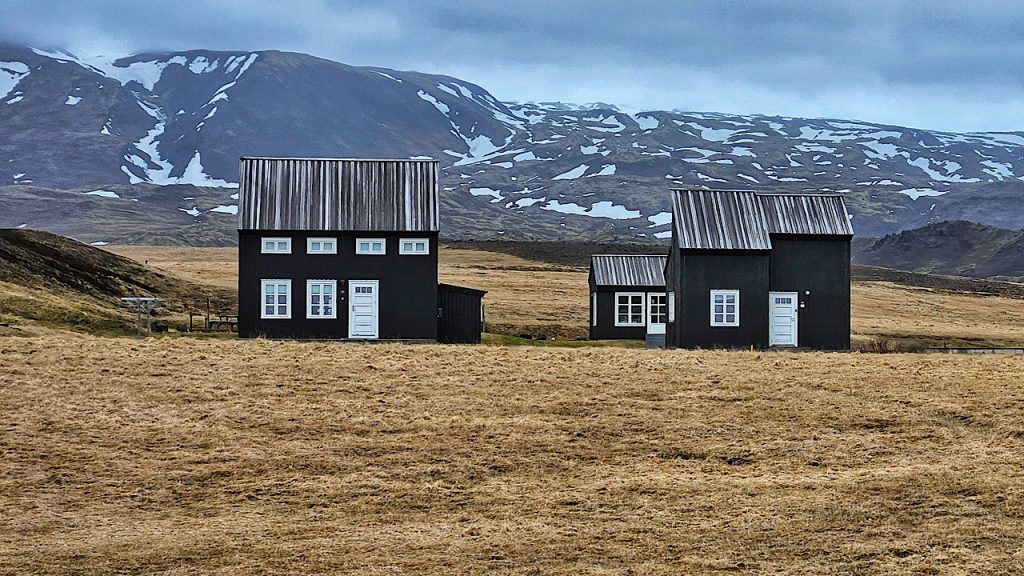
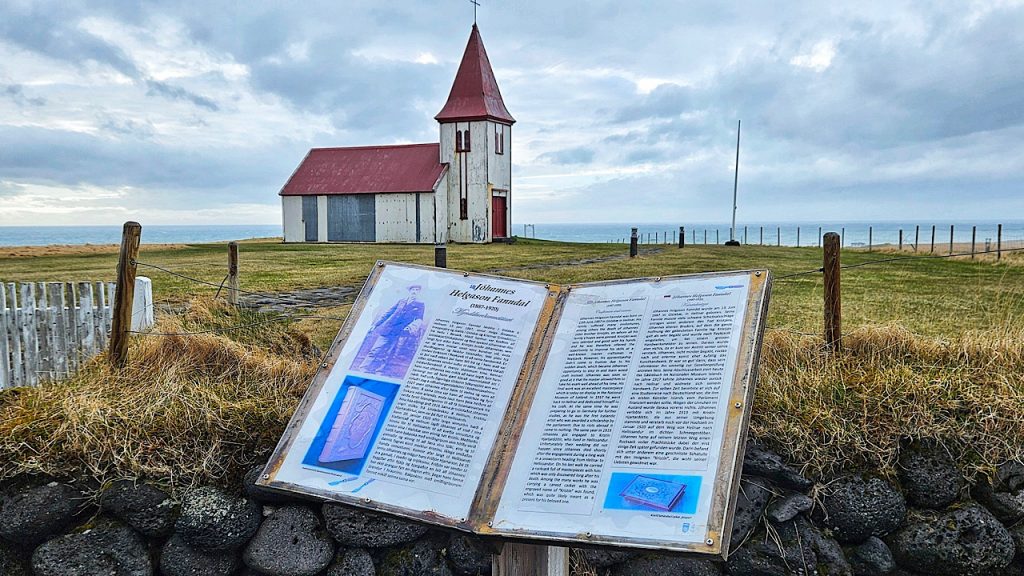
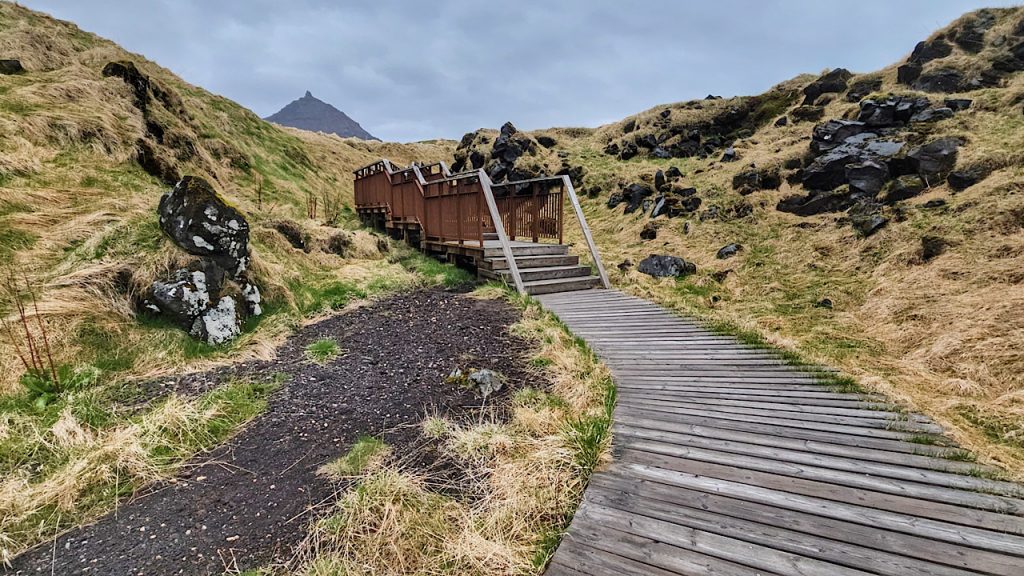
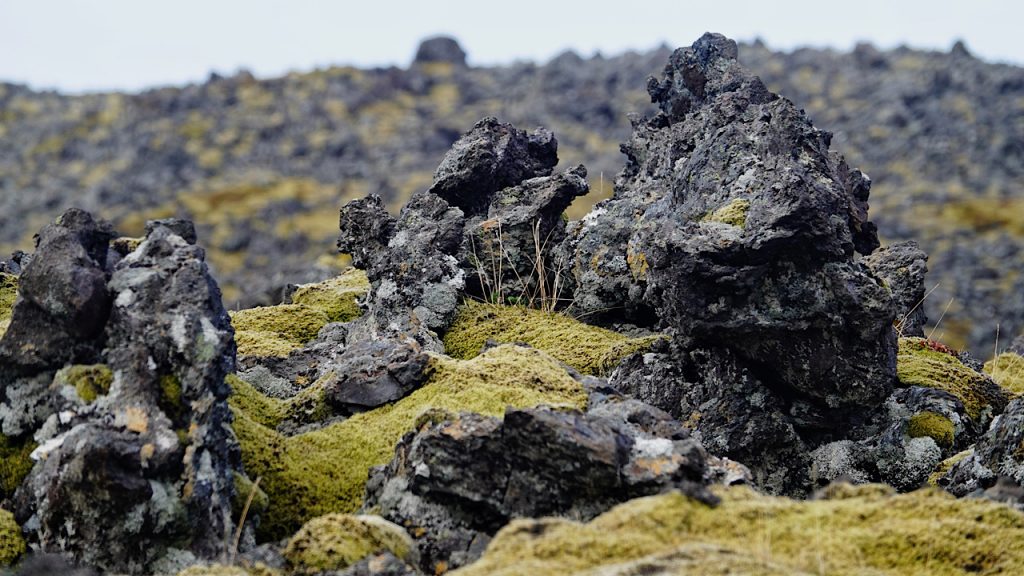
- Lóndrangar – The Rocky Castle
One of the many geological wonders of the Snæfellsnes Peninsula, Lóndrangar earns the right to be on the Iceland’s hidden gem list. Once a volcanic crater, eons worth of ocean battering has left only these two basalt columns remaining. One scaling in at 75m and the other at 61m. In time, no doubt, they too will be reclaimed by the sea, although for now, they proudly line the cliff tops with dramatic assertion. Folklore haunts the lands surrounding these cliffs and have resulted in modern day farmers not working the land, thanks to the elves!



- Dritvik Djúpalónssandur – Black Sand Beach, Lagoon and Epine GY7 Fishing Trawler
We nearly missed this wonderous spot, although at the last minute I picked up the camera icon on Google Maps. How glad I was that we stopped here. There are so many dimensions to this fabulous beach. Firstly you have umpteen coastal footpaths to indulge in. Secondly, climbing down a reasonably steep set of steps towards the beach, through a passage way that is protected by carved posts to distract your attention. Walking through a gorge of talk cliffs, you reach the Black Pearl beach, which will astound you, both thanks to its black pebbles and sand, its coastal formations, the lagoon hidden behind the beach and the shipwreck. In 1948, British registered trawler, Epine GY7 was washed ashore here in a storm. Only 5 of the 19 strong crew were saved before the ship was battered upon the rocks. And today the remnants of that trawler lay strewn on the beach in testimony to those who died and lived to tell their tale. It’s a really dark, dramatic and eerie place that just has to be experienced.
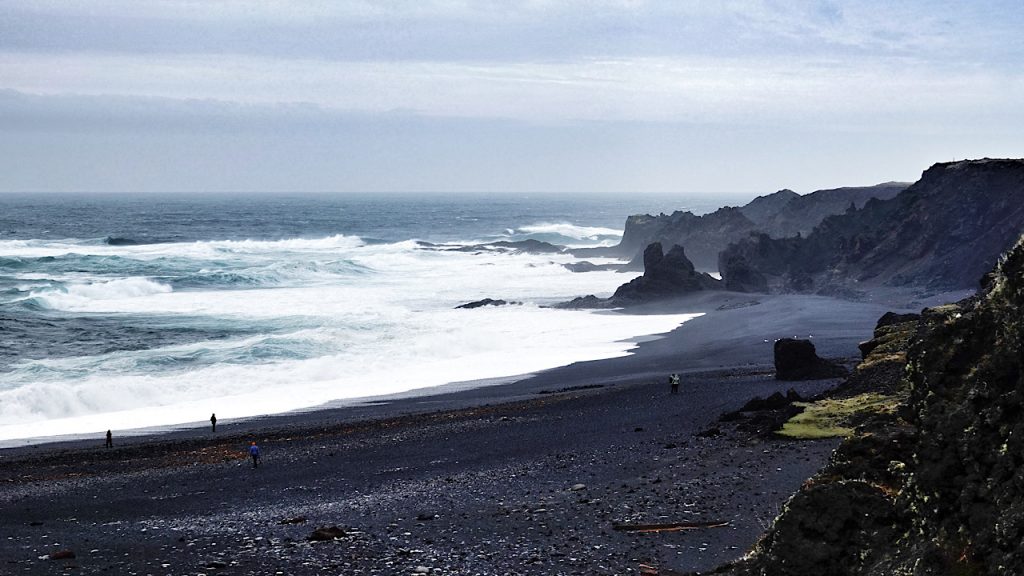
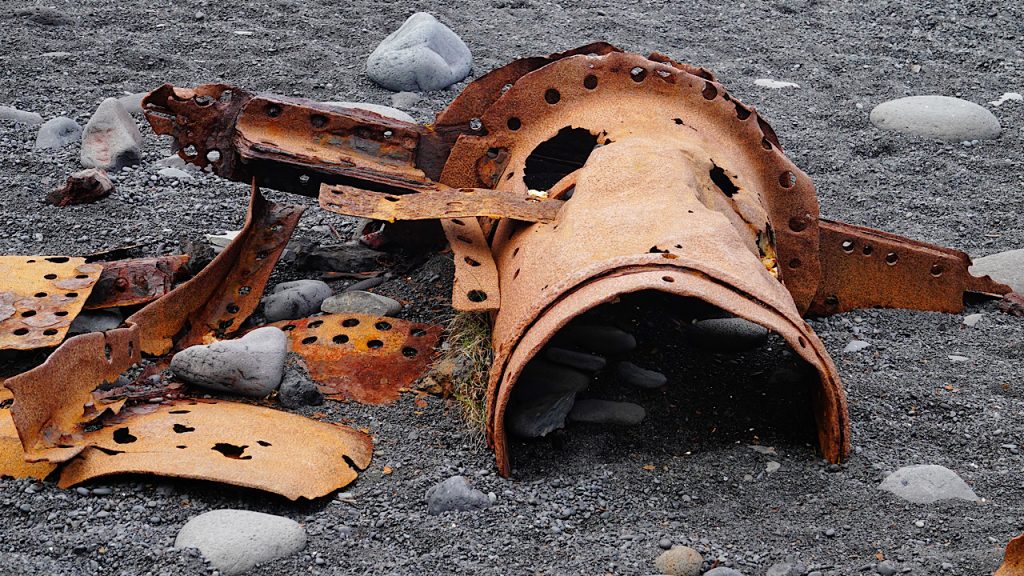
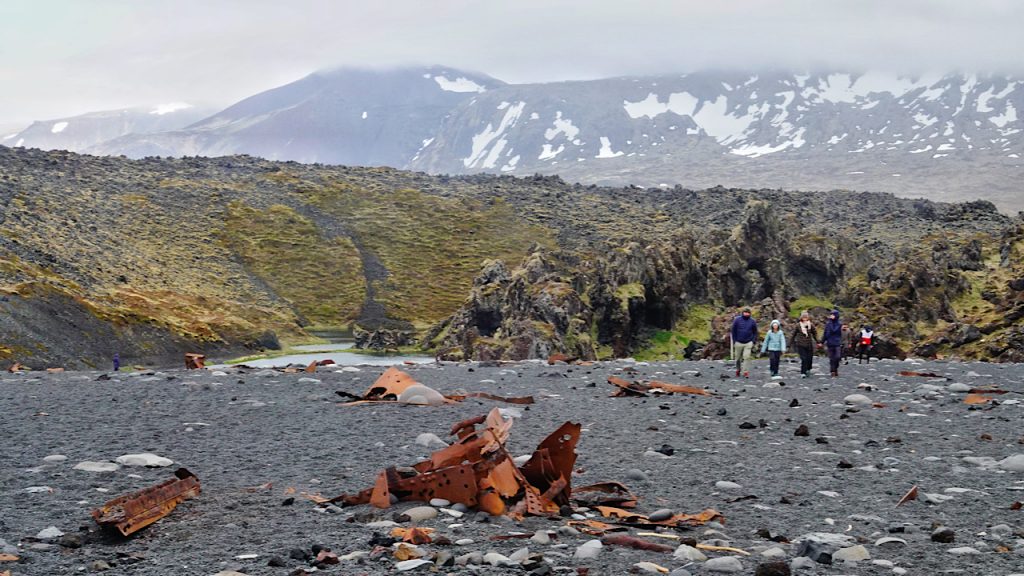
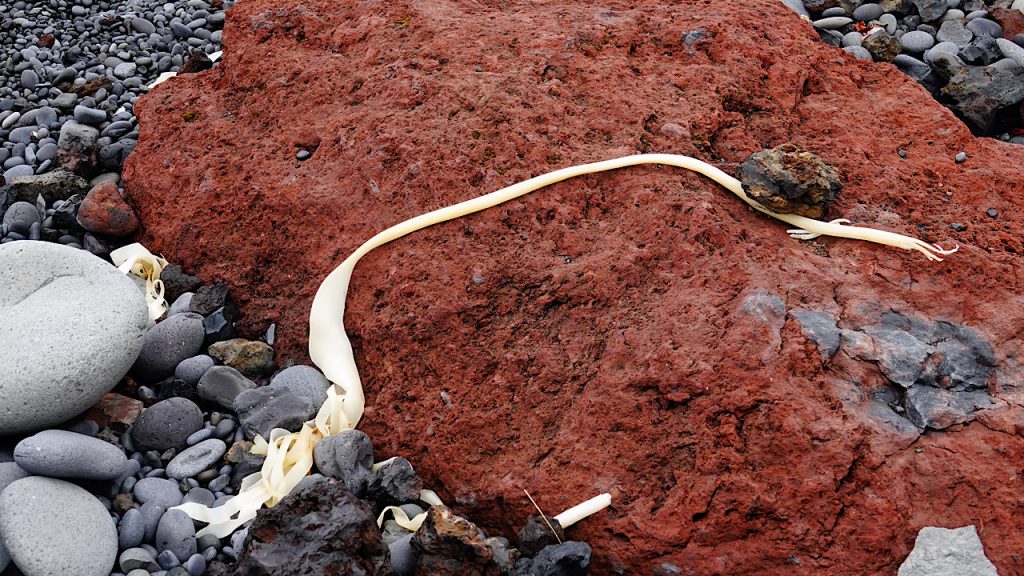
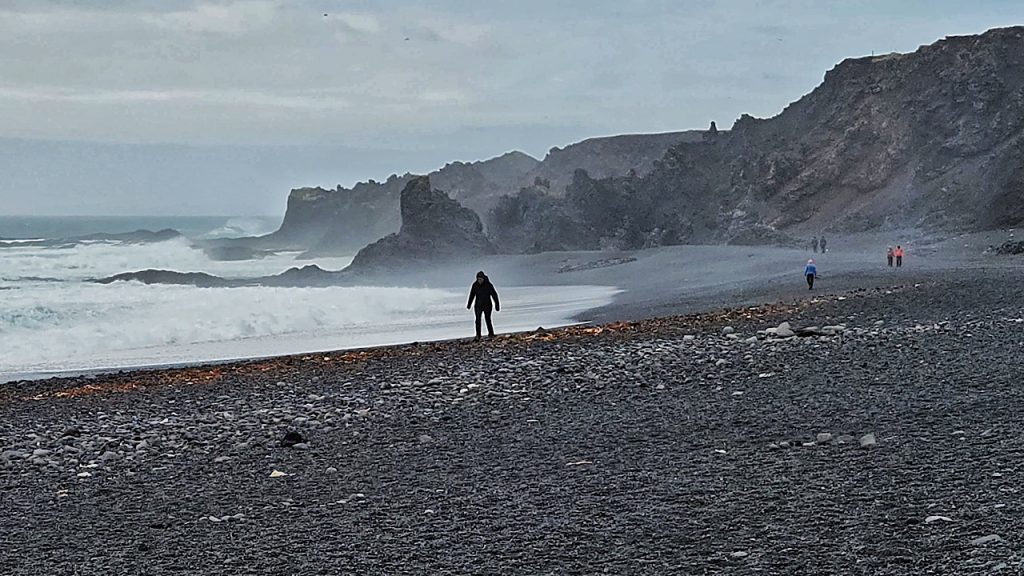
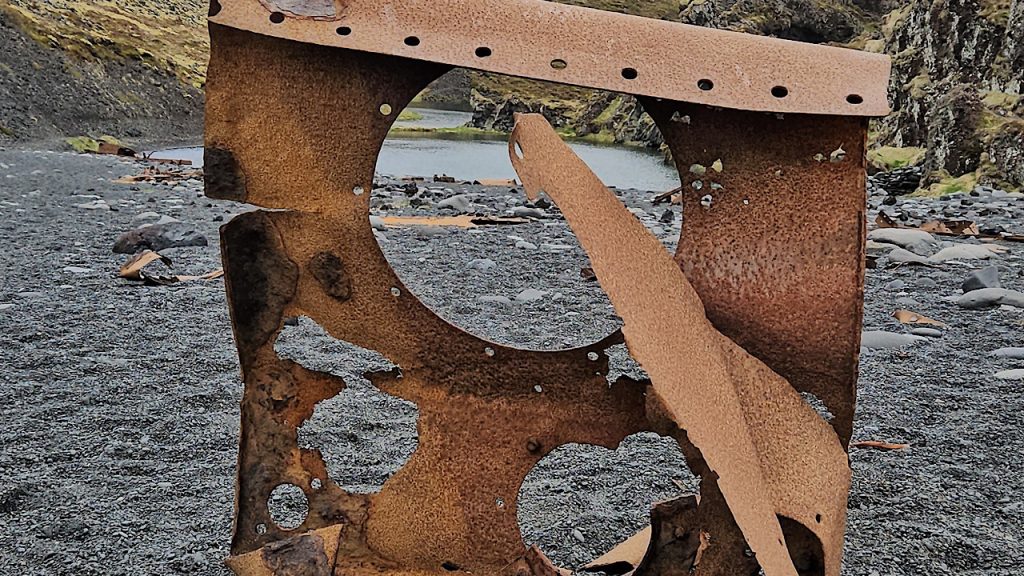
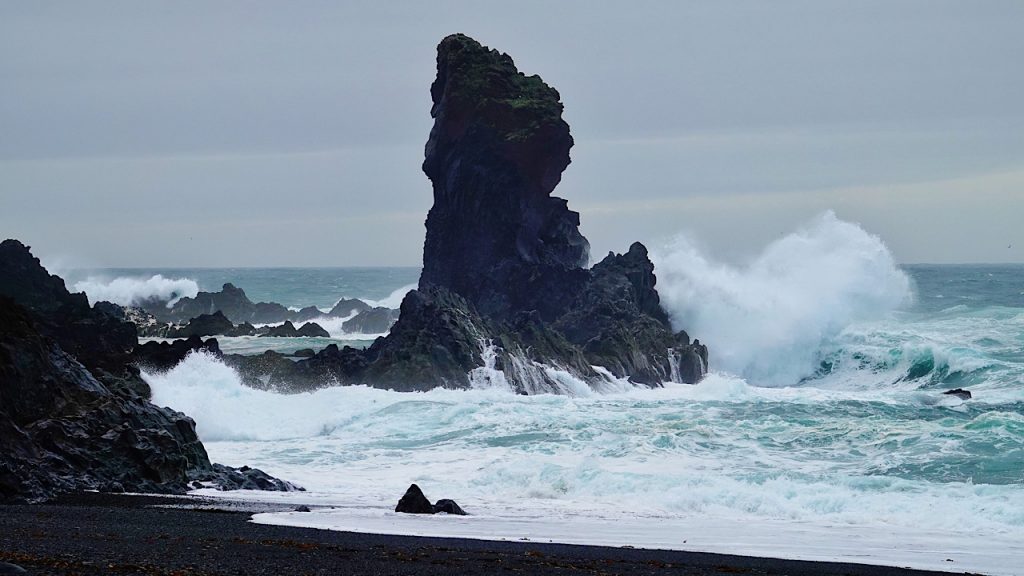
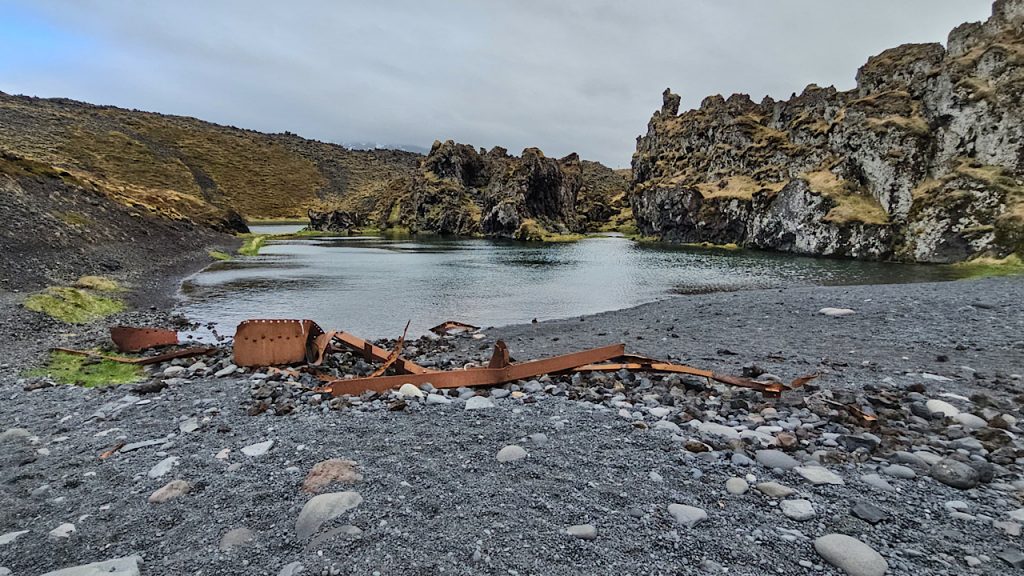
- Saxhöll Crater
One of the many craters around Iceland, that offer you a taste of life here in the land of fire and ice exists here on the peninsula. This particular crater has iron steps that scale the dormant volcano, giving you a fabulous view across the Snæfellsjökull Mountain and Glacier. Although, I say this without direct experience, as the day we visited, a huge swathe of cloud enveloped the mountain, sweeping down the valley in a ghostly manner. On top of that we had gale force winds that were whipping down the mountain, making even opening the car door a challenge. We did manage to get part of the way up the crater, only to be battered and beaten by the power of the winds. It was just too dangerous to continue. However, on a good weather day, I would definitely recommend this.
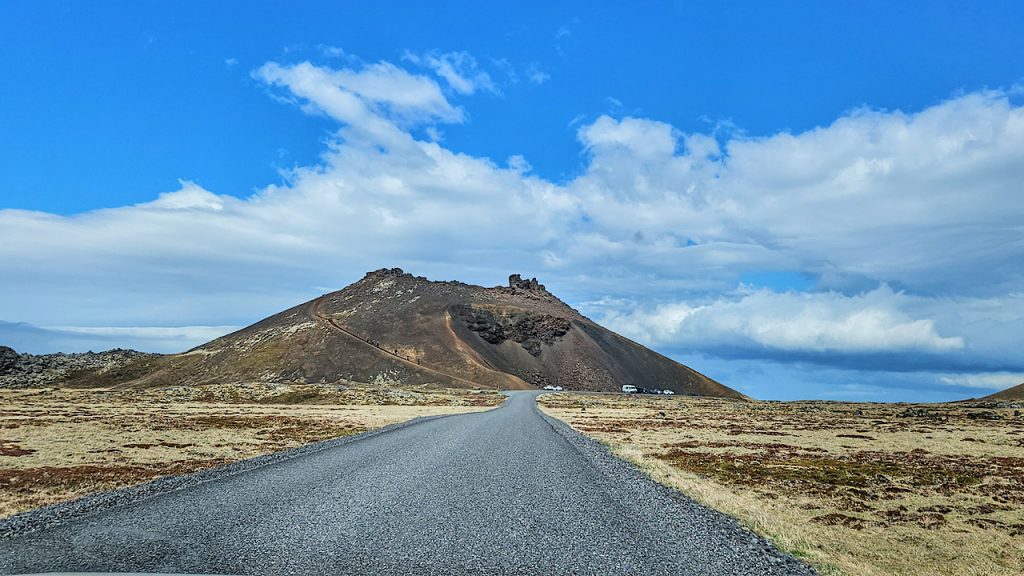
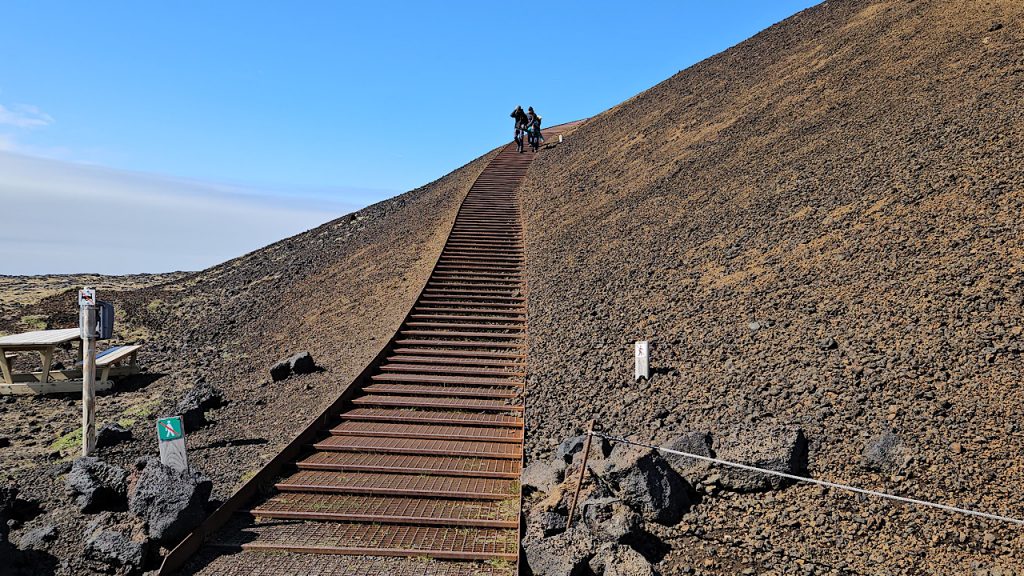
- Northern Peninsula towns of Hellissandur, Rif and Ólafsvik
The northern landscape is wild, vivid and vast as the glacial mountain sweeps to the sea. Tempestuous winds rage, whipping up the streams and waterfalls into a frenzy, whilst the three hardy towns along this northern fringe are battered, front and rear. They’re not pretty, although in their attempt to stand up against the elements, they have a spirited charm if not an architectural beauty. The same can be said I think of many towns and villages across the island. They are however worth seeing and each one has their own campsite with fabulous views behind and in front.
These towns offer the easiest access to the Snæfellsjökull National Park and its 700,000 year old glacier for those adventurous explorers and hikers. One of the most striking features are their harbours; formed with a strong essence of courage against adversity as they battle the waves to fish for their livelihoods. Black beaches also provide a visually pleasing panorama and the wetland deltas that separate the sea from the towering giants at Ólafsvik will have you in awe as you drive along its causeway.
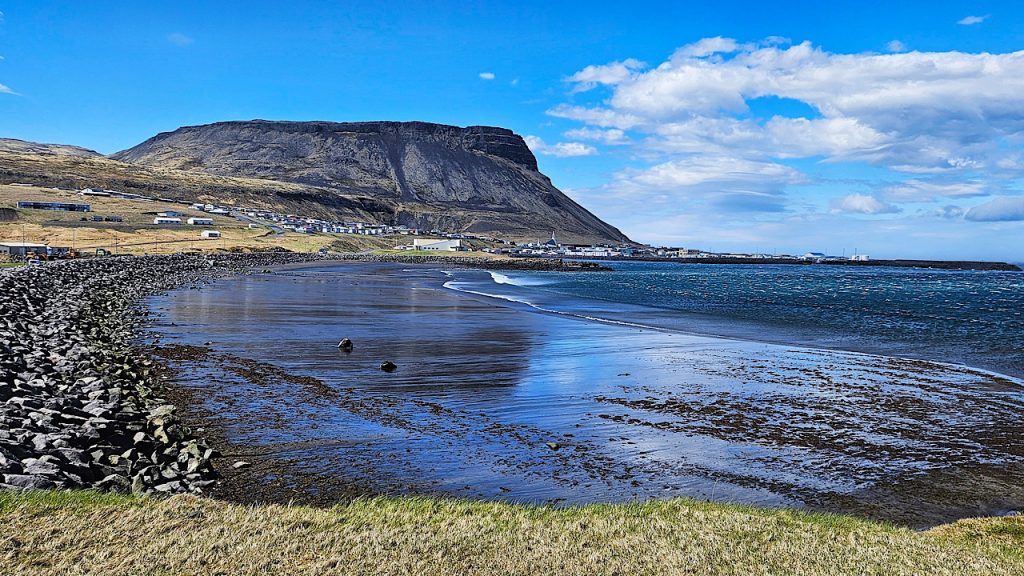
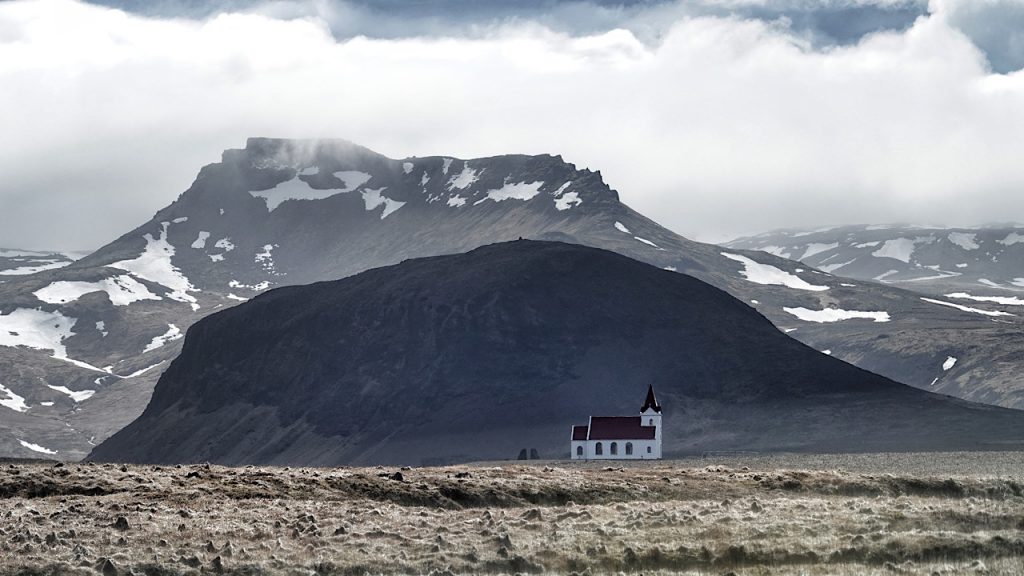
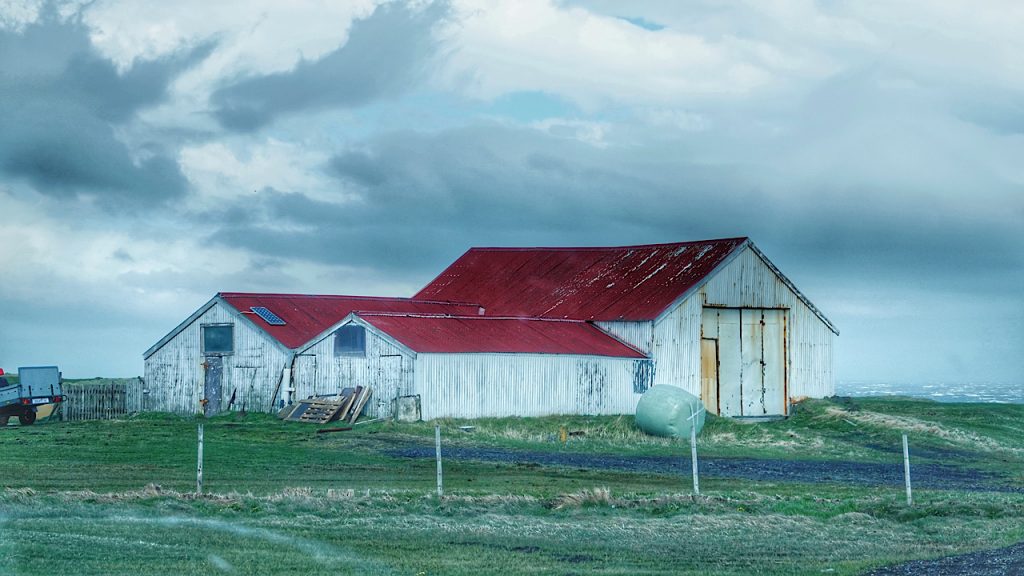
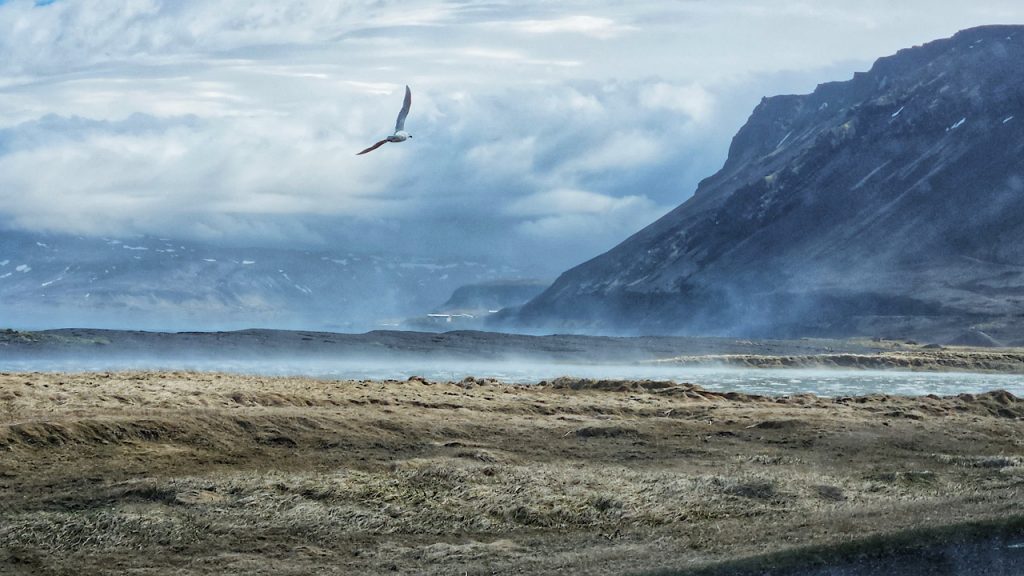
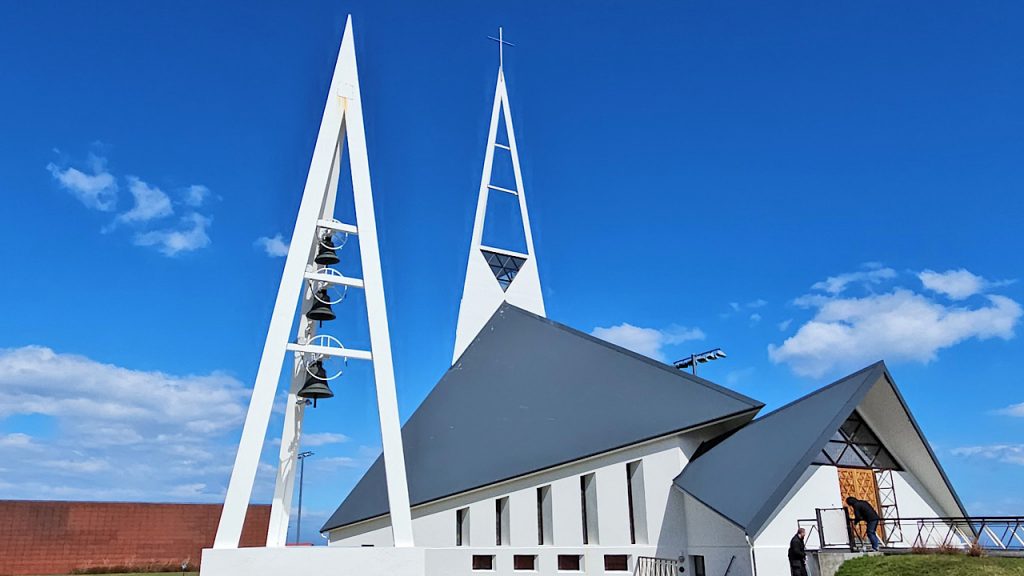
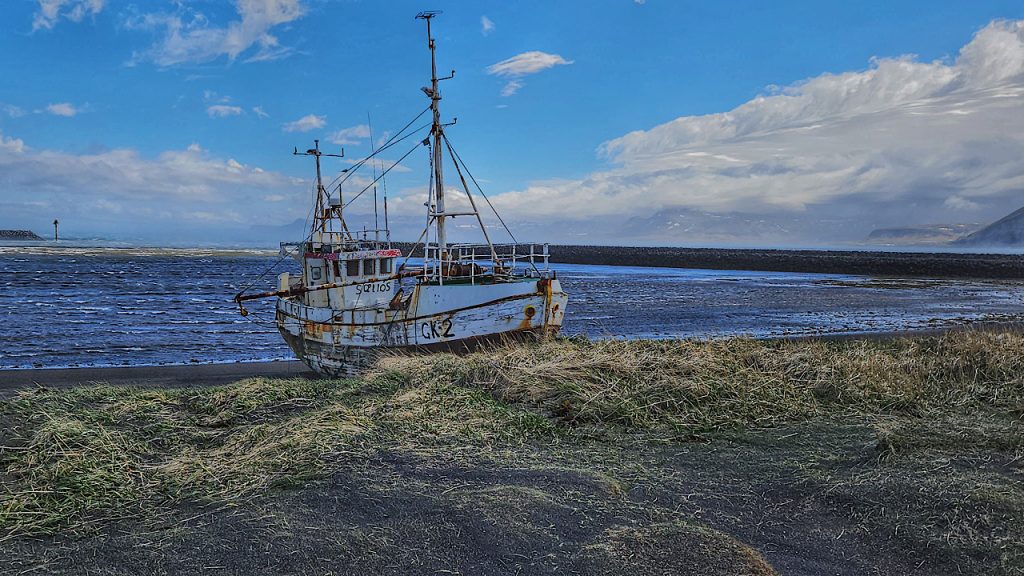
- Kirkjufell mountain and waterfall – iconic photograph
There are many places in Iceland that boast being the best spot for an Instagramable shot. One of the best for me has to be the iconic Church Mountain along the northern route towards Stykkishólmur. You see this unique mountain long before you know quite what it is, and then the tourist signs give its secret away. With a paid car park of around £6, which you can pay by Revolut or the EasyPark App, like sheep we followed the crowds. What happened next blew me away. Spray from a waterfall popped so vividly in my view that it took my breath away. Kirkjufell, framed by this beautiful cascade of water was just something else, especially with the odd ray of sunshine gracing its unforgiving walls.
The path down to the river bed is steep and of course crowded, although with a bit of patience, it is possible and well worth the hike back up. Sadly it is not suitable for anyone with mobility issues, although access to the top of the waterfall can be achieved. I hope that my images, both of the mountain and the views towards Rif will speak for themselves.
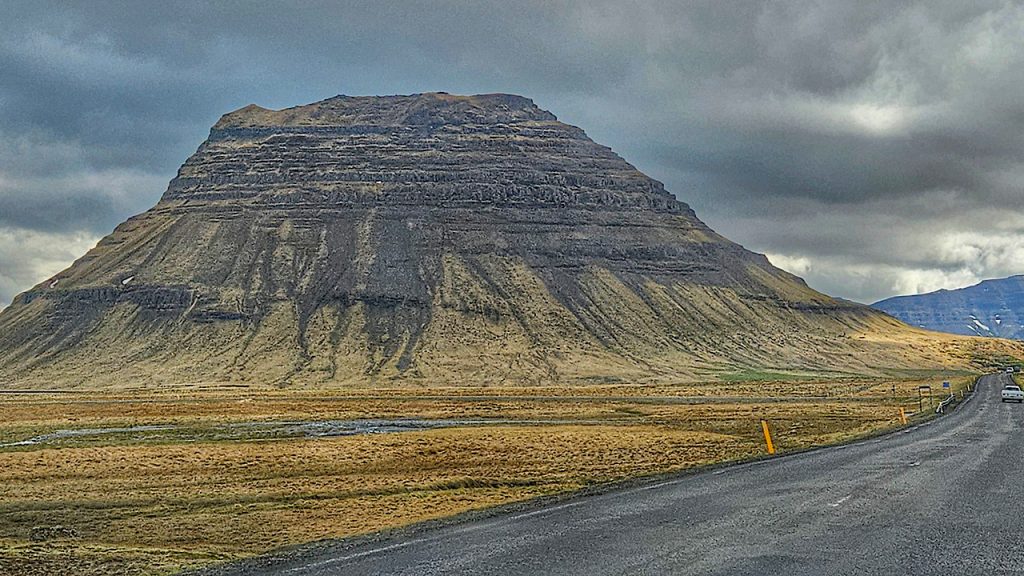
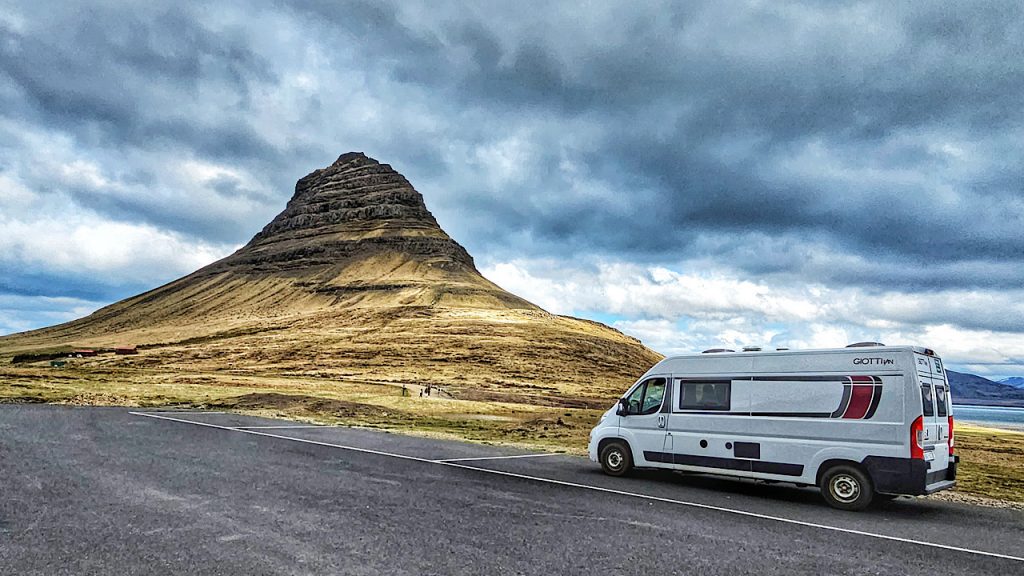
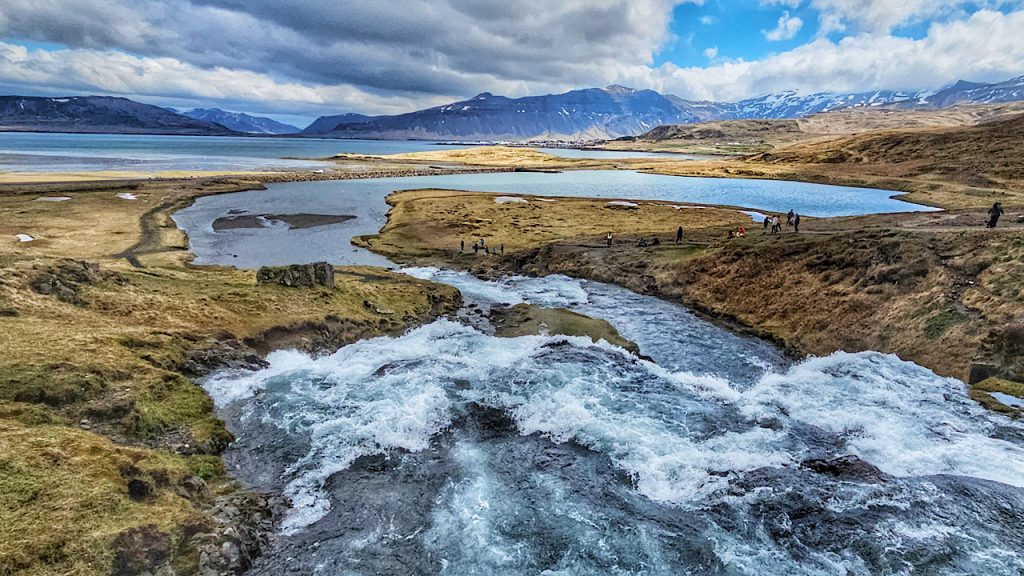
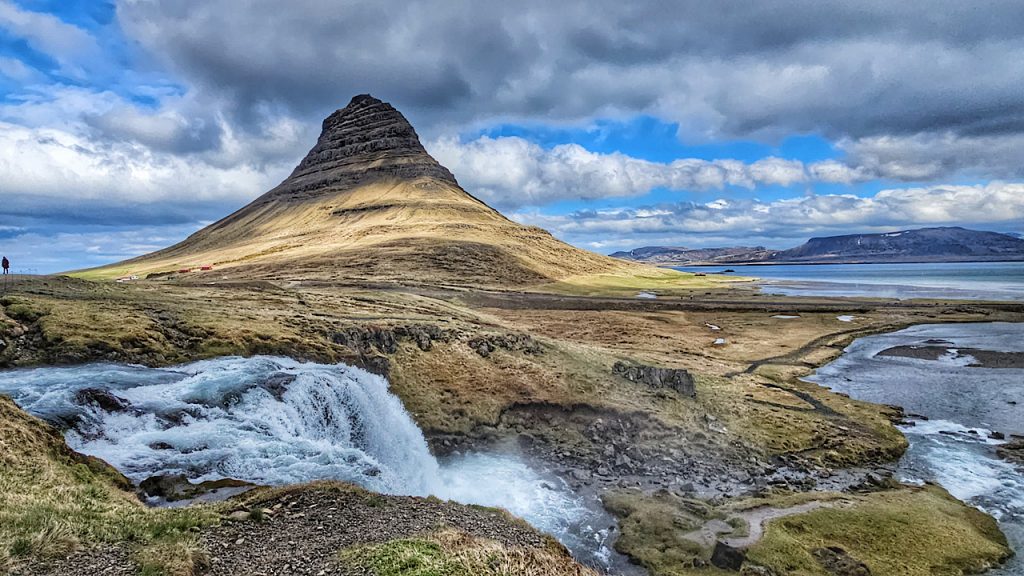

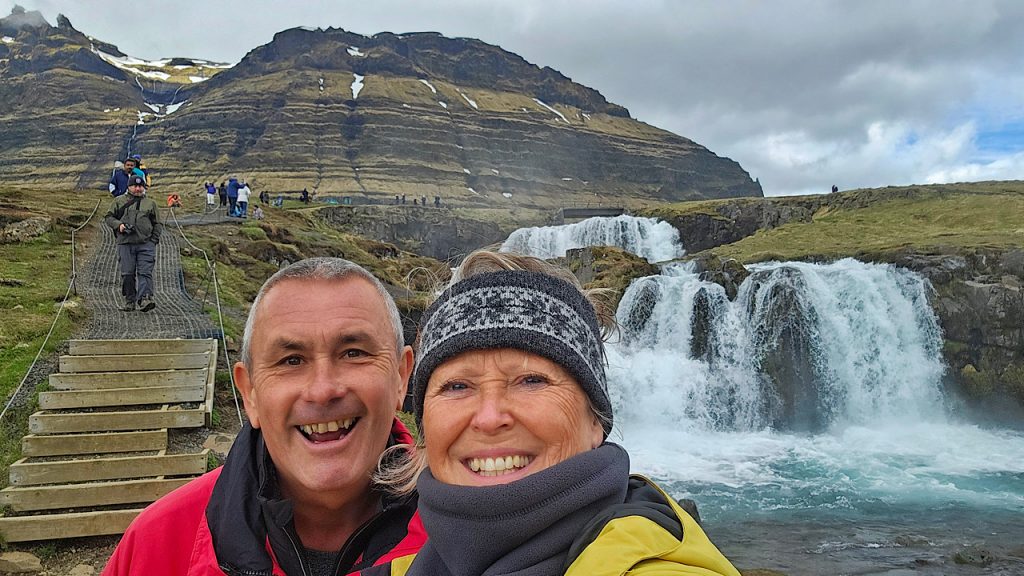
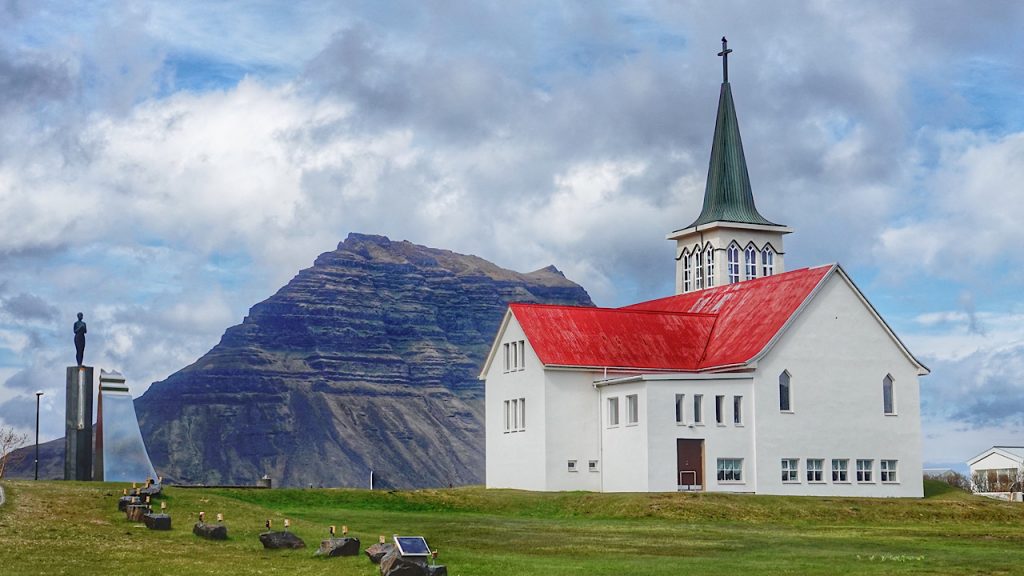
- Stykkishólmur harbour and ferry
For us, the end of our visit to the Snæfellsnes Peninsula came to an end at the ferry terminal at Stykkishólmur. Of all the villages on this ‘mini Iceland’ slice of heaven Stykkishólmur was the most characterful. With its skyline modern church, set with the snowy mountains behind, to the harbour full of fishing boats waiting for good weather to harvest their fish from the rich fjord waters. The ferry takes 2.5hrs and is suitable for most vehicles. Personally we would have been uncomfortable bringing our 7.5m Pilote motorhome on the ferry at low tide. High tide might have made the embarkation far easier, although with our low slung rear end, there is no doubt we will have scraped, or worse.
Please check with the ferry company Eimskipp Seatours for costs for your vehicle and to assess whether you can safely board this ferry with your motorhome. Otherwise the road option is still open to you and is approximately 50 miles around to the Westfjordlands region along a couple of gravel tracks.
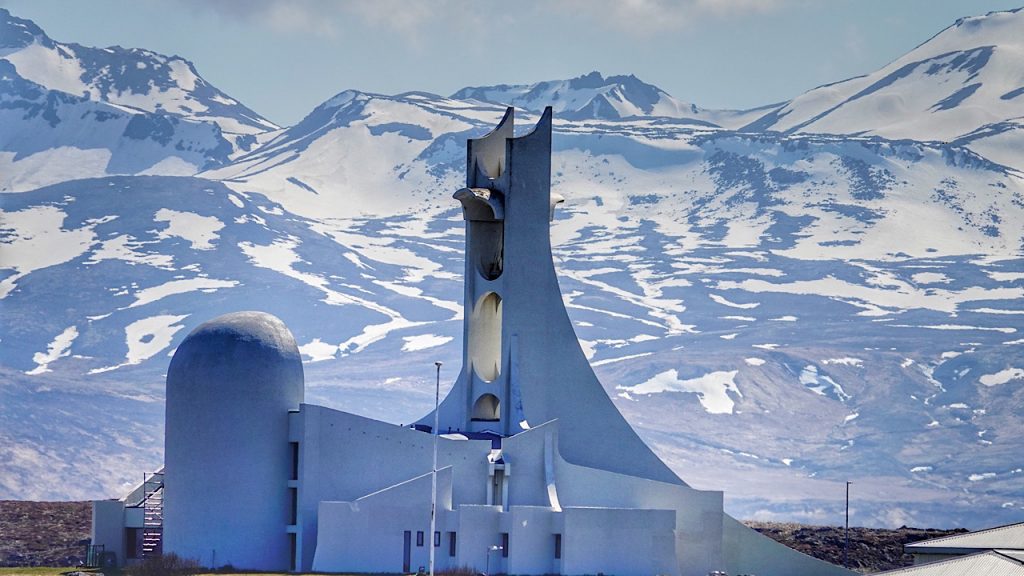
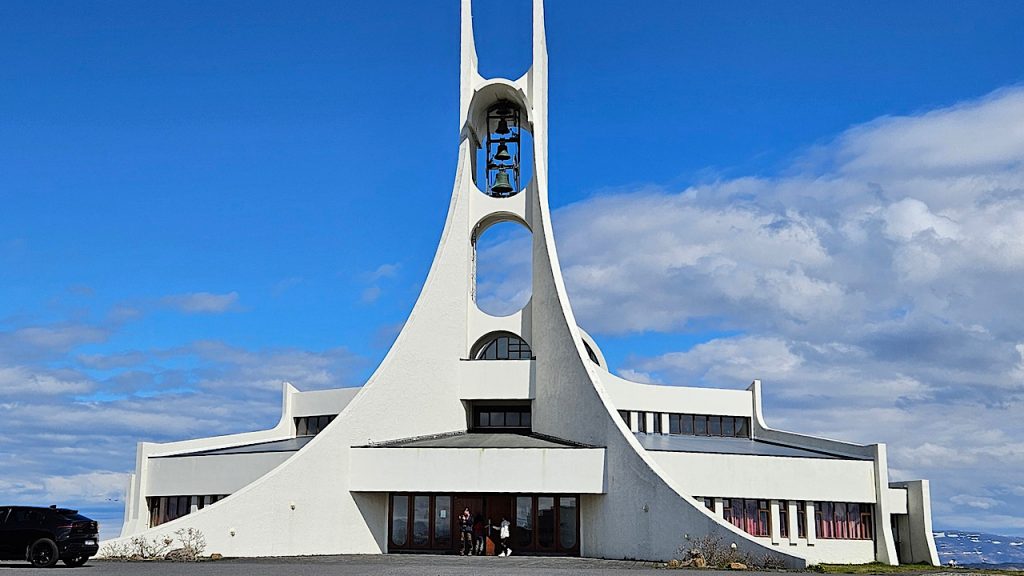
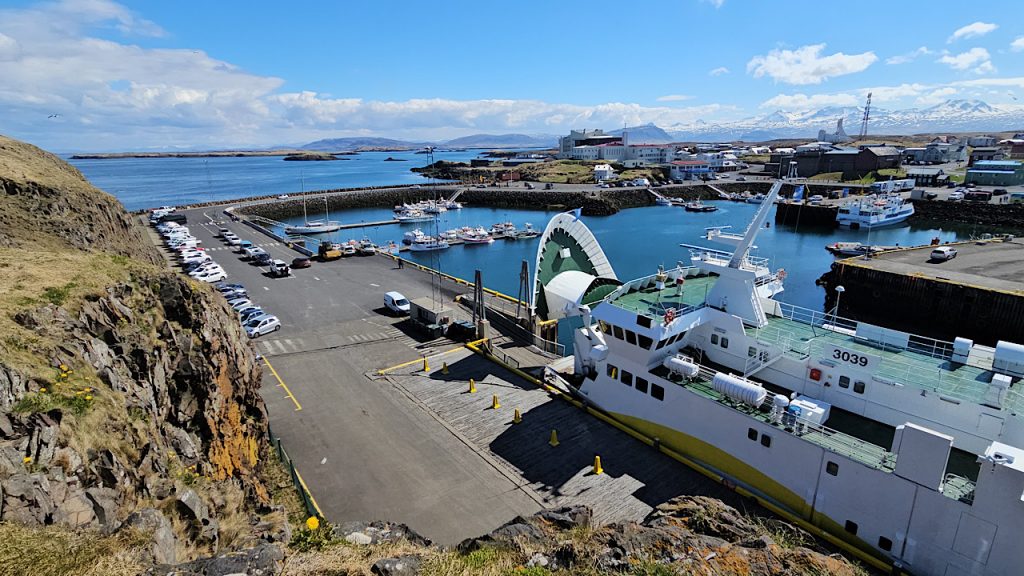
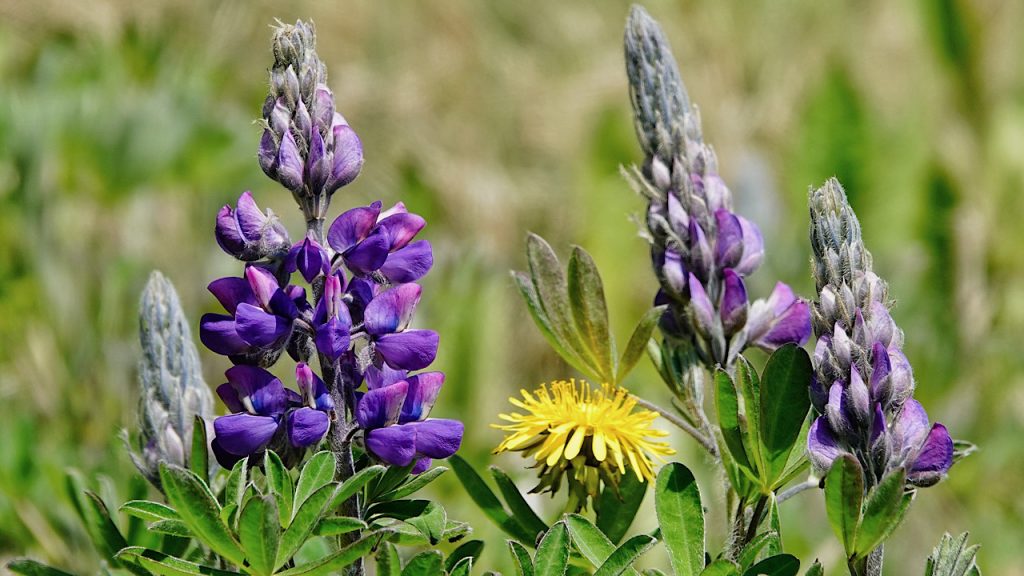
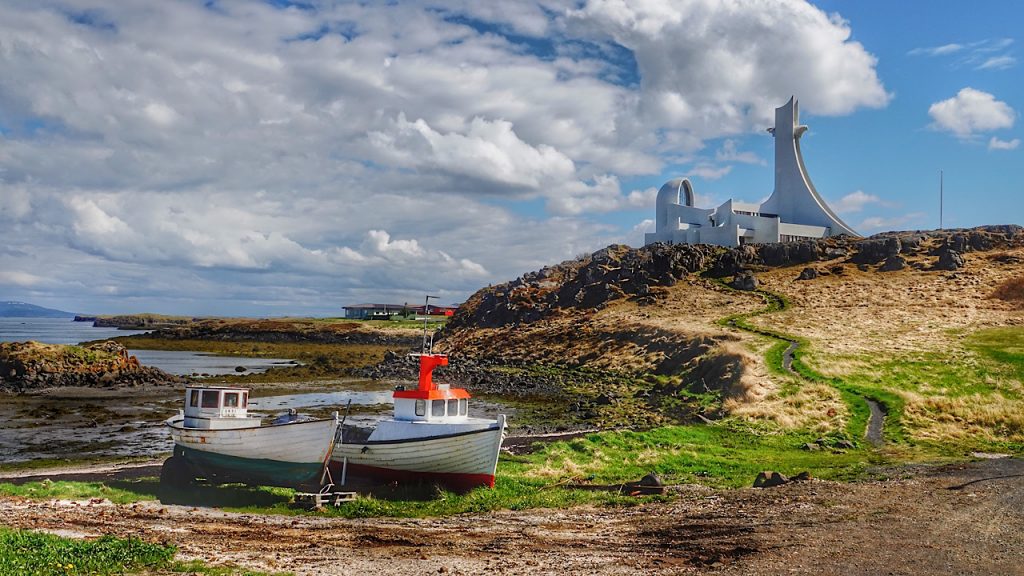
When to visit Iceland’s Snæfellsnes peninsula
Whether you are coming to Snæfellsnes Peninsula or Iceland as a whole, timing your visit here has a modicum of luck involved. If you travel during their late autumn and winter, when the daylight is scarce and snow is prominent, or you choose spring for lighter nights and a burst of green through the white, either will delight. Although from a practical viewpoint, visiting Snæfellsnes peninsula is better during the spring and summer if you are under your own steam. If you decide to take a tour from Reykjavik, then early autumn and late winter would be doable too. For the latter I would recommend you planning your packing well. I did a video about what to pack for a winter visit, as a warm strategy is definitely required.
Spring is a fabulous time to come, although don’t be fooled. The weather is unpredictable, often wet and regularly windy. Sturdy walking boots and robust coats are a must. If you are coming by motorhome, there are plenty of campsites available at Arnarstapi, Hellissandur, Rif and Olafsvik to name just a few.
Otherwise, if like us, on this occasion, you choose to fly and drive, then there are plenty of small hotels and self catering options on the Snæfellsnes peninsula. You can either do the plans yourself through Booking.com or as we did, choose Iceland experts Discover the World and get them to do it for you, a choice we did not regret one little bit.
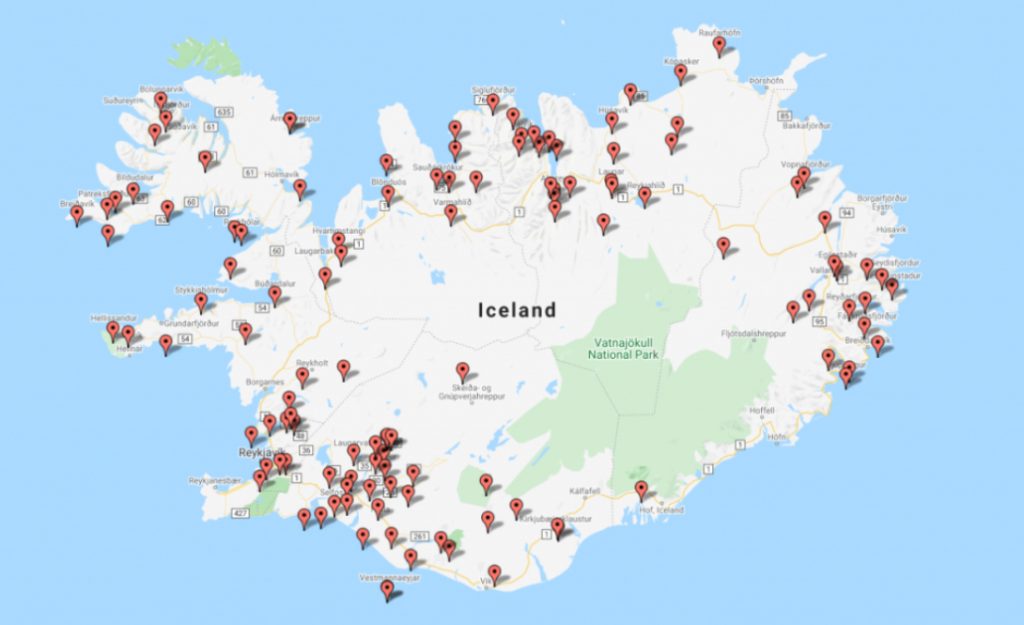
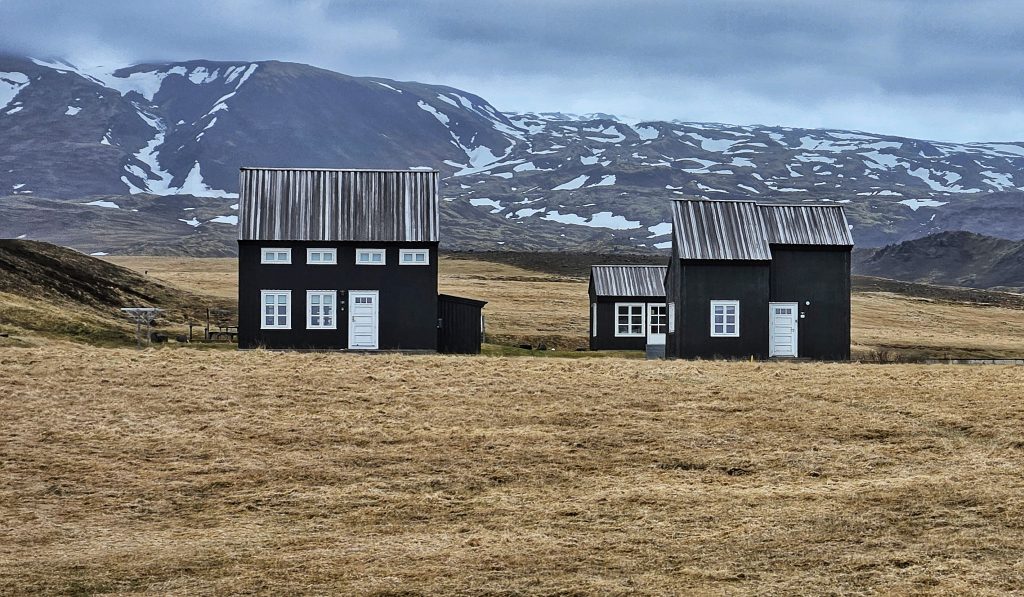
I hope that this short introduction to What to Visit on Iceland’s Snæfellsnes Peninsula has teased and tempted you. For more travel inspiration why not check out our blog page on the website. Until next time!
/Karen

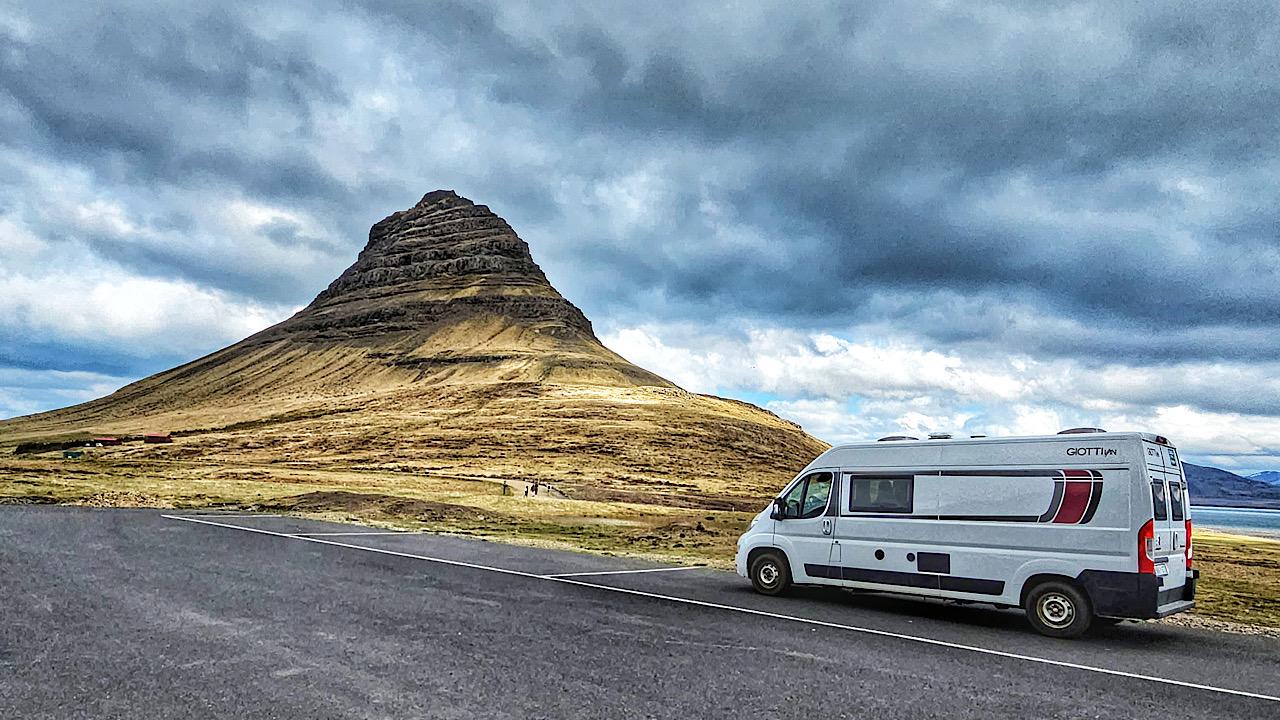
0 Comments